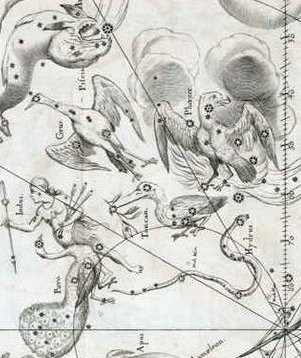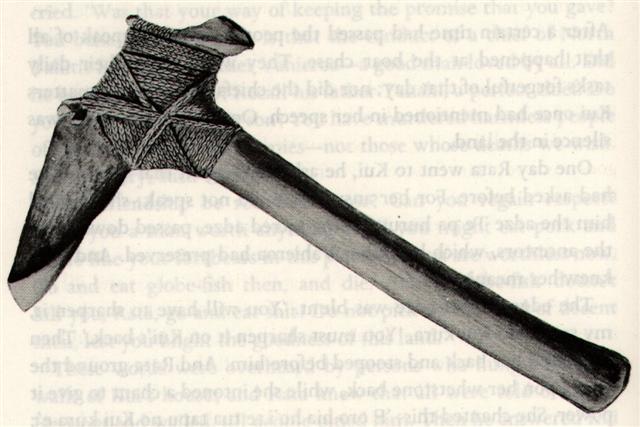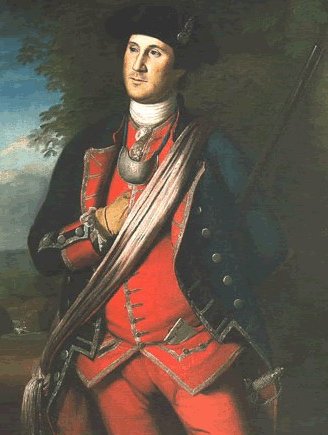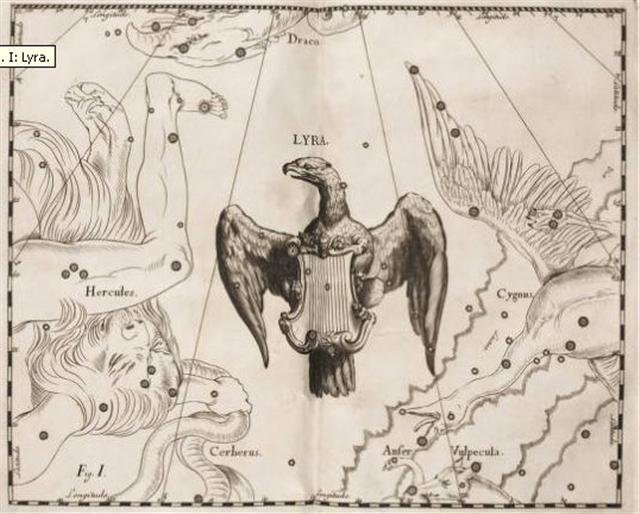3-1. The day named January 13 (→ 13 * 13 = 168 + 1), when the Full Moon (ideally) would be at the right ascension line of the Eastern one of the twins (Pollux), corresponded to day number 378 (→ 210 + 168): ... The eniautos of the Phoenix would be the said 500 (or 540) years; we do not know yet the stag's own timetable: his 'year' should be either 378 days or 30 years, but there are many more possible periods to be considered than we dream of - Timaios told us as much. For the time being the only important point is to become fully aware of the plurality of 'years', and to keep an eye open for more information about the particular 'year of the stag' (or the Oryx), as well as for other eniautio, especially those occurring in Greek myths which are, supposedly, so familiar to us, to mention only the assumed eight years of Apollo's indenture after having slain Python (Plutarch, De defectu oraculorum, ch. 21, 421C), or that 'one eternal year (aidion eniauton)', said to be '8 years (okto ete)', that Cadmus served Ares ... Which we ought to associate with (↔) Saturn ('dripping water' → tagi, tears → E:92).
Line Ea3 carries 35 days (glyphs), and 65 (Ea2-33) + 35 = 100. The 6th glyph in the line was referred to by Metoro as toki hakakaikai - i.e. the mirror version of hakakaikai toki:
In the G text the place of heliacal Naos (Ga2-27 → π) was identified by a Rei (→ Re'i as in Turkish for 'Captain').
Hupee upside down (cfr Bb1-24), in the day after the day which on average was the coldest in the year, suggests 'the cold mists' were (ideally) here dispersed by the first rays from the rising newborn Sun (as regarded from a position north of the equator).
Hupee. Mucus; hupeehupee, asthma. T Pau., Ta.: hupe, mucus. Churchill. Ta.: Hupe, mucus. (Sa.: isupē, id.) Ma.: hupe, id. Churchill. Rhume, air froide. Jaussen according to Barthel. At this stag(e) of his re-evolution the Sun was vulnerable, cfr the 24th Chinese station Willow → Stag.
... The kaikai are the rythmic songs that are sung to cat's cradles, the string games that are found not only throughout the Pacific but throughout the world. On premissionary Rapa Nui the kaikai, together with their corresponding cat's cradles, were not simple children's games but were used, among other things, to produce magic effect. They were highly important for the study of Rapa Nui's rongorongo. This is because it was apparently with the aid of cat's cradles that the rongorongo experts taught their pupils to learn many of the chants accompanying the incised inscriptions ... ... string games could be resumed after it was clear that the Sun had managed to leave the horizon and was rapidly gaining in altitude: 'Before the sun starts to leave the horizon ... when it shows only on the horizon, ... then string games were no longer allowed as they might lacerate the sun. Once the sun had started to go higher and could be seen in its entirety, string games could be resumed, if one so wished. So the restriction on playing string games was only applicable during the period between the sun's return and its rising fully above the horizon ... ... I knew of two men who lived in another settlement on the Noatak river. They did not believe in the spirit of the string figures, but said they originated from two stars, agguk, which are visible only when the sun has returned after the winter night. One of these men was inside a dance-house when a flood of mist poured in ... His two companions rapidly made and unmade the figure 'Two Labrets', an action intended to drive away the spirit of the string figures, uttering the usual formula ... but the mist kept pouring in ... Reciting a magic negative formula twice should annul the first instance and convert it back into a positive effect, e.g. (-1) * (-1) = +1
This idea might have been in the mind of Metoro when he at first stated kua kake (Ba4-27) followed by e kua tuu (Ba4-35) and then changed it into hakakaikai toki followed 8 days later by kua tua. → Double Double (ε Lyrae).
... First it had been written kua kake ('climbing bird'), but Easter Island was south of the equator and presumably this was the reason for changing it into → hakakaikai toki. For the northern spring coincided with the southern autumn. Cfr: kua tuu → kua tua.
|
||||||||||||||||||||||||||||||||||||||||||||||||||||||||||||||||||||||||||||||||||||||||||||||||||||||||||||||||||||||||||||||||||||||||||||||||||||||||||||||||||||||



.jpg)

















